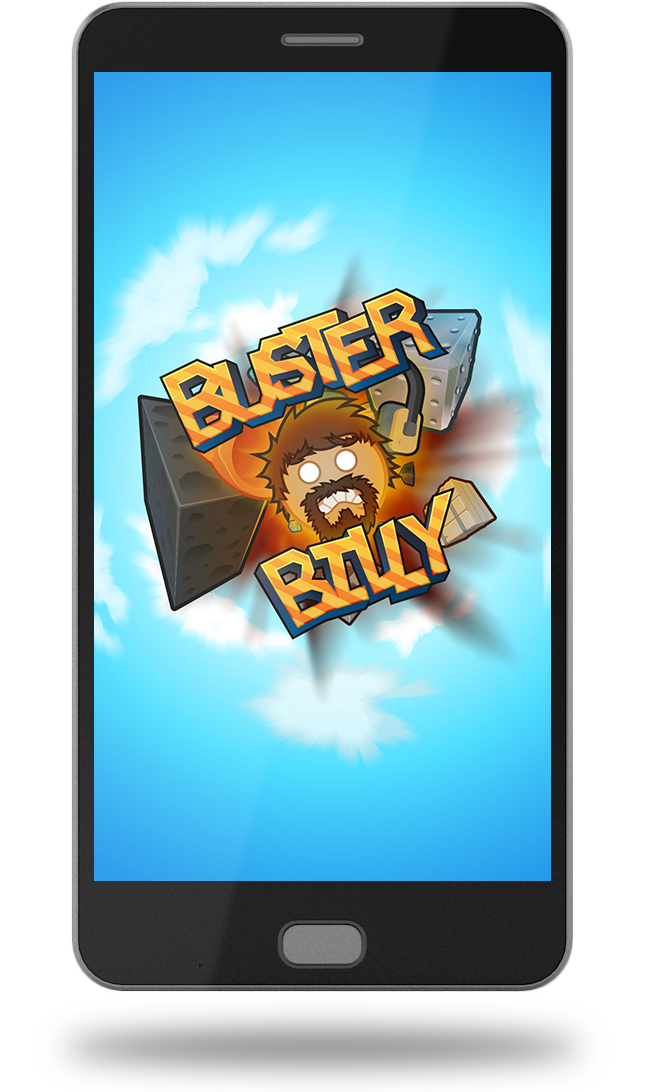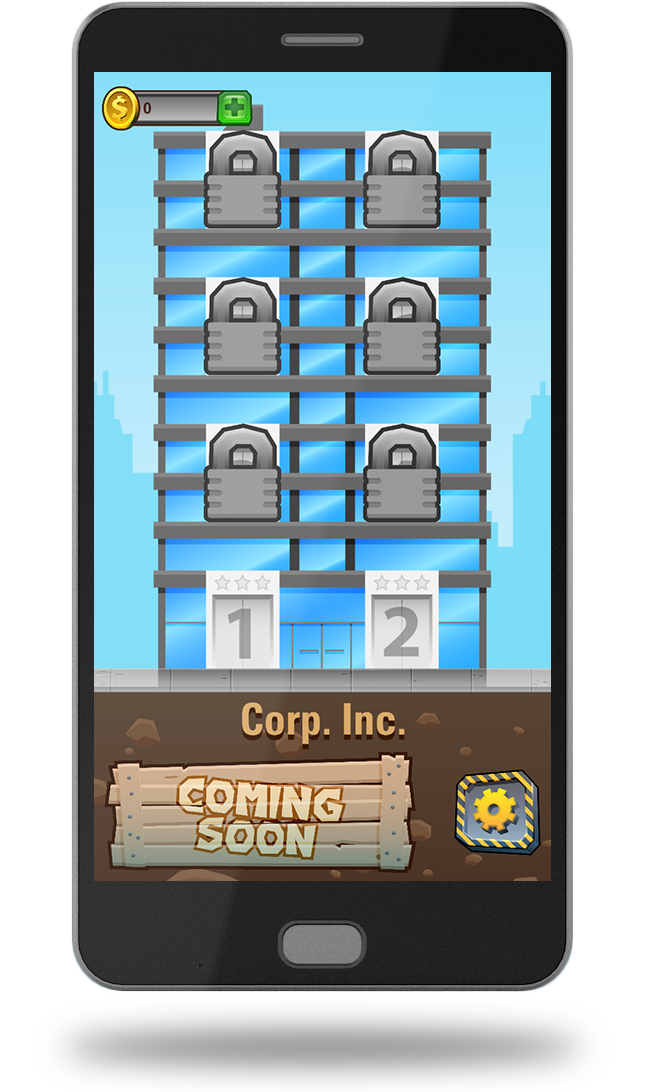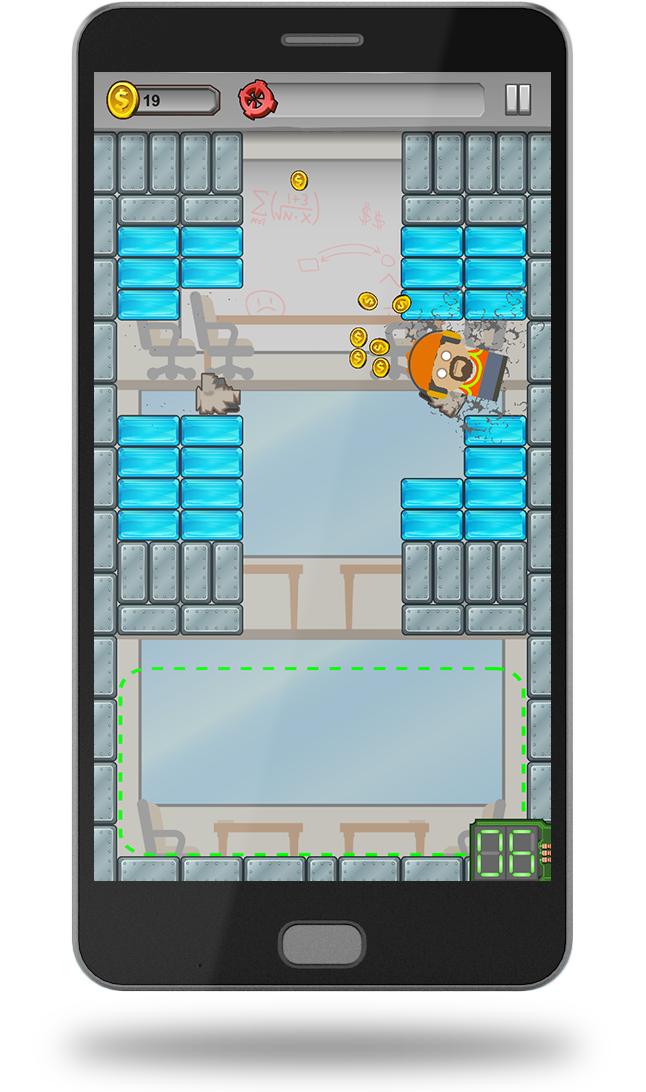
The graphic design program from which I graduated, had solo shows for senior students. I was given the opportunity to have one on my own terms. I decided I was going to use the show as an opportunity to learn as much as I could in one semester about the full cycle mobile game development.
• To learn as much as I can and gain experience with game development, market research, and the full software development cycle
• To create a fully functional mobile game
• To launch said game properly in a mobile app store
 Poster for phase 1
Poster for phase 1
As shown in the poster above, Phase 1’s goal was to identify market opportunities so that I could plan my game accordingly. I chose the Google Play Store because I wanted to learn about the Android development process and Google Play’s developer license is cheaper than it is for Apple’s App Store.
App popularity was an important metric for my ability to properly plan my game’s mechanics, since I was trying to identify an unmet market opportunity. I calculated the popularity of app categories by dividing the number of the category’s apps that had over 50k downloads with the total number of apps in said category.
Looking at the data I had gathered from Appbrain.com (among other Play Store analytic websites) I had found that majority of mobile games (in Google's Play Store) categorize themselves loosely or incorrectly. The game’s “hook” is more important to maintain active users. Based on the genre data, I published my app under the “Simulation” category as it provides the second most unmet demand. The “RPG” genre is highly labor and upkeep intensive, so I steered clear of that for this project.
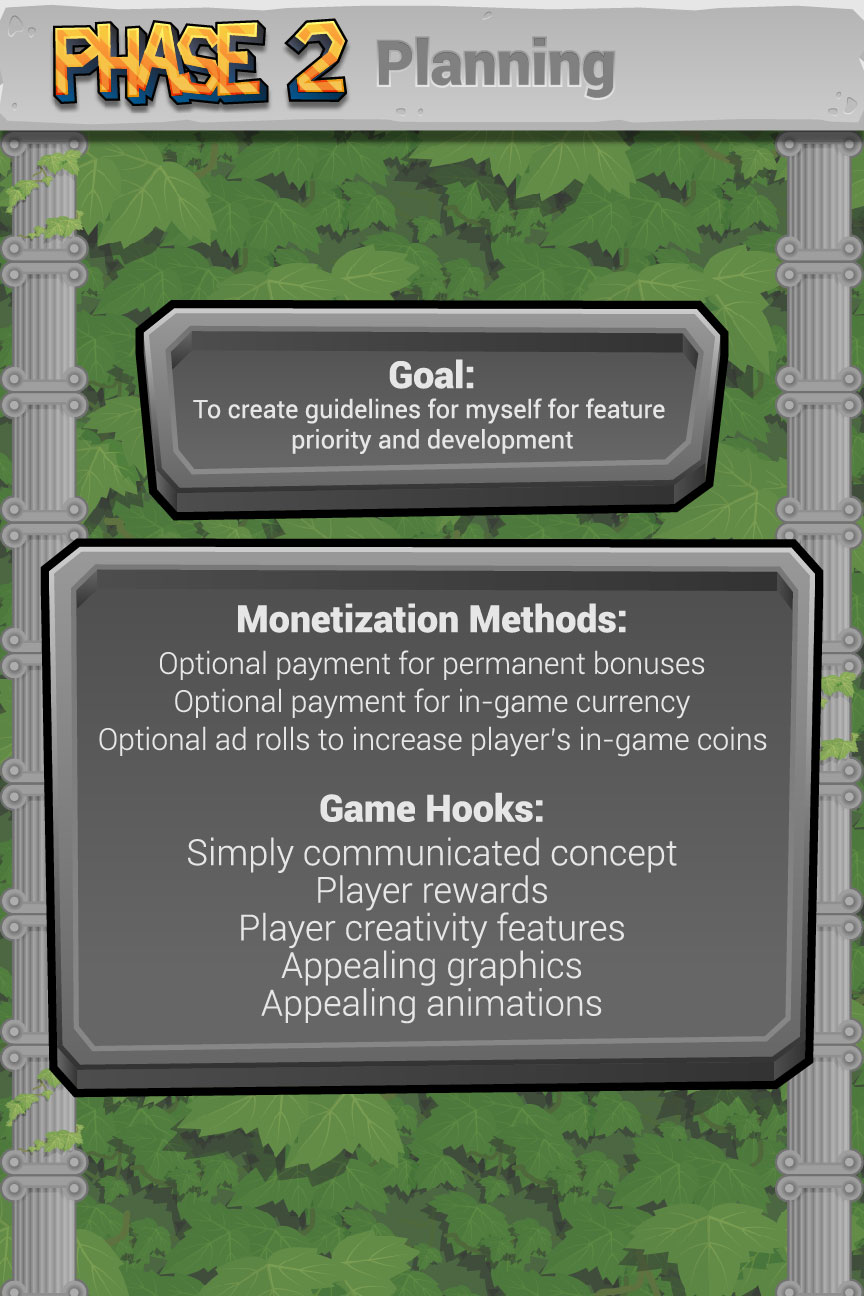 Poster for phase 2
Poster for phase 2
Based on the conclusion from Phase 1 and a hefty bit of reading on mobile game marketing, my strategy shifted more towards simplifying familiar video game concepts, and aiming for player engagement. The most common and apparently one of the more effective ways to do this, is to modify a game that has been remade or “cloned” a lot. For my project, I used the base idea of the 1976 Atari classic “Breakout” and reimagined the gameplay for a modern smartphone.
Because of how much video games have evolved since 1976, just this modification in itself isn’t enough to keep players interested. To compensate, I planned for the addition of features over time, with app updates. Such features would include: new power-ups, more levels, more character costumes and cosmetics, and anything that enhances the core game without changing it. Alongside these additions, I made sure to keep the core game as interesting for the player as I could, given my time constraints.
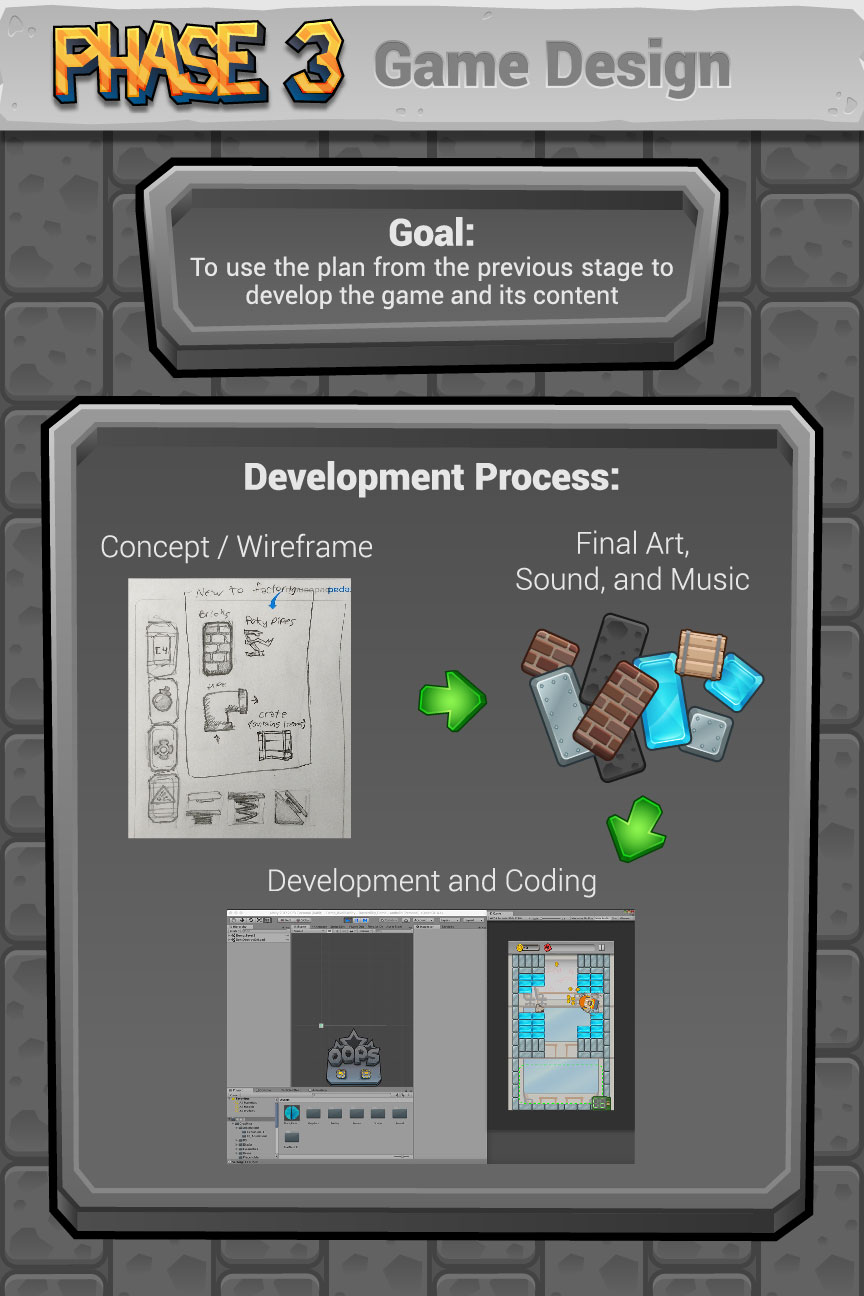 Poster for phase 3
Poster for phase 3
The development of the game was by far the longest part of this project. I was aware before starting this project that development would take the longest portion of time, so I made sure to place priority on certain tasks. Game content and features with lower priority had a corresponding possibility of being cut as the project moved along. This is an idea I borrowed from common Agile development practices regarding adaptive planning.
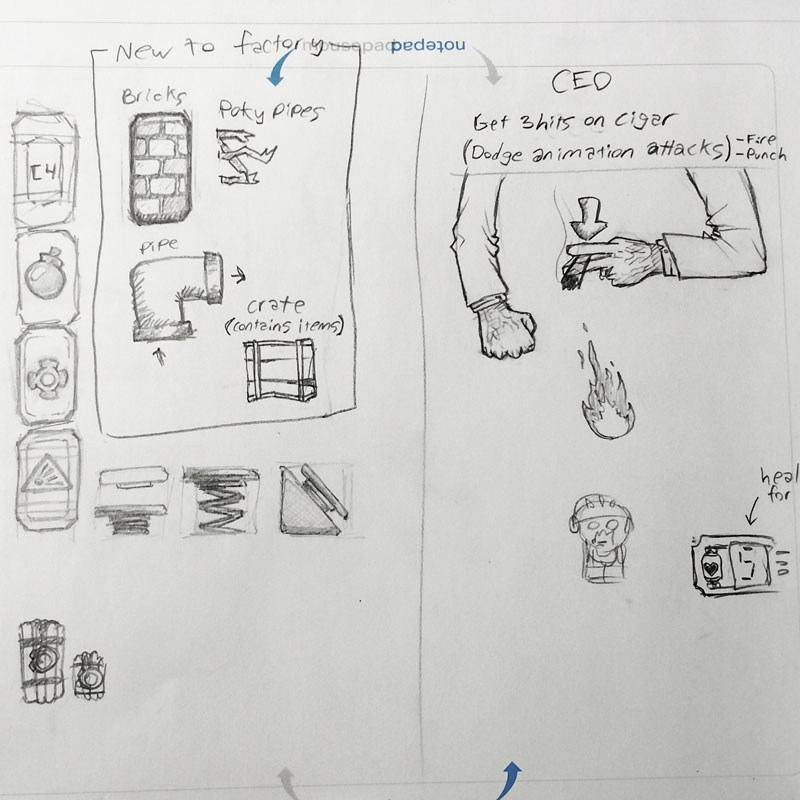
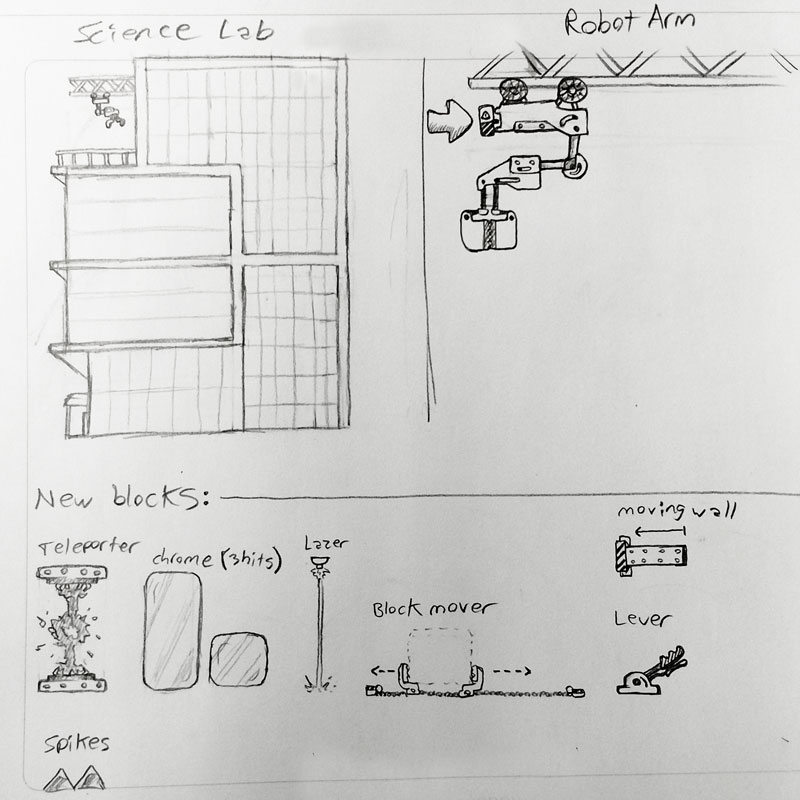 Level & zone designs
Level & zone designs
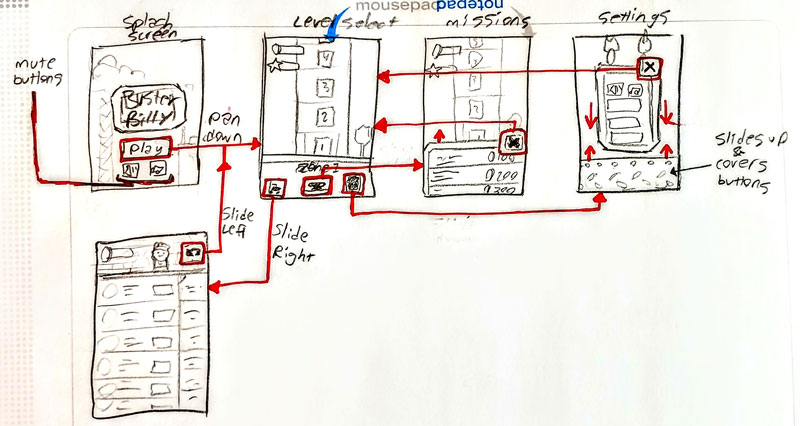
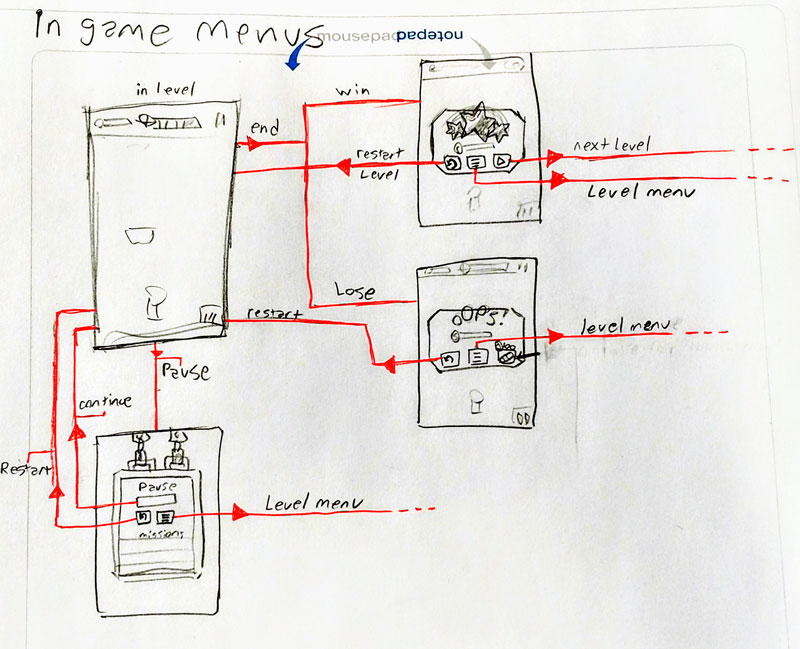 Menu navigation sketches
Menu navigation sketches
Wireframe sketches were essential to the fluidity of the gameplay. If i had not created content sketches or menu wireframes before development, it would have been easy to miss important functionality. Though it may be obvious that certain panels should have a “close” button, it’s easy to lose track of that while creating and polishing graphics or coding game functionality.
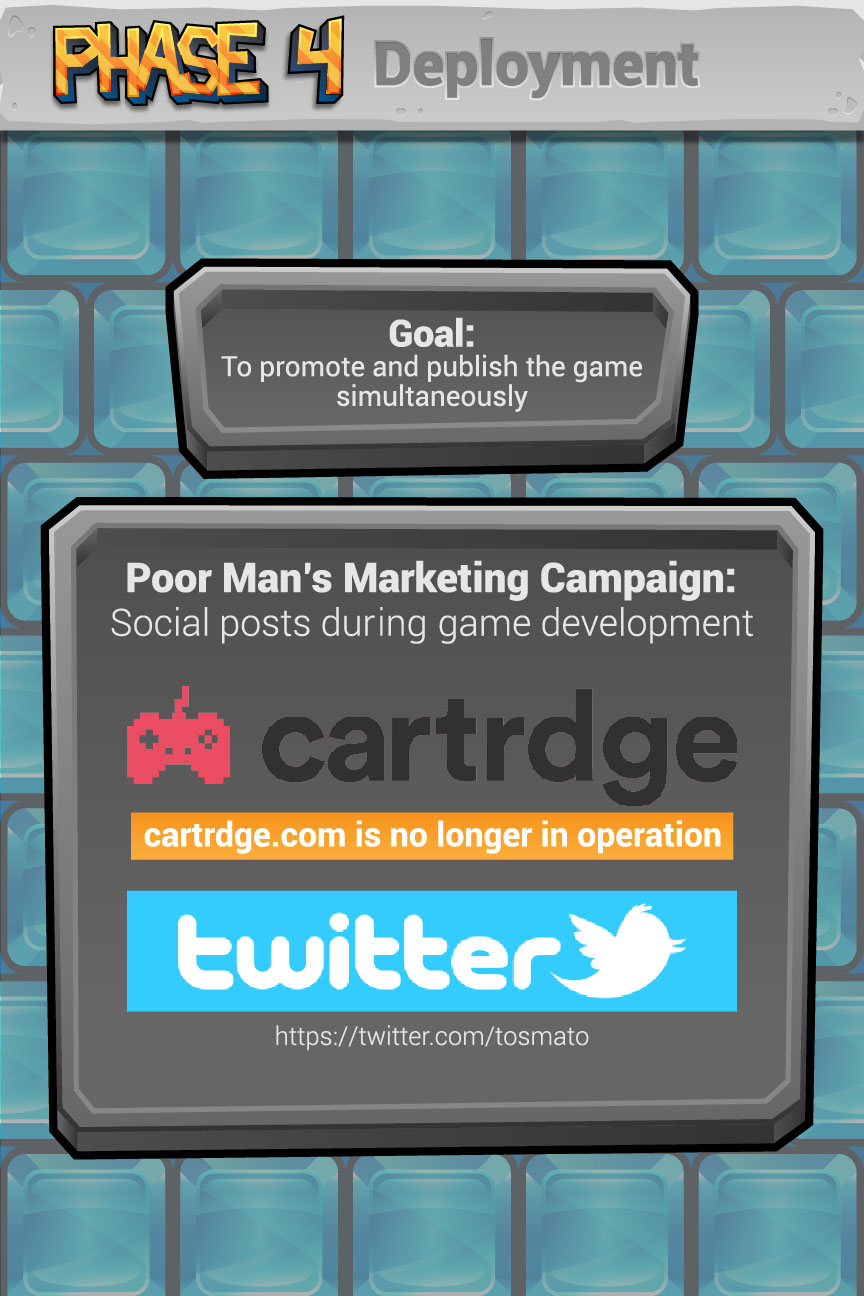 Poster for phase 4
Poster for phase 4
Social media advertisement is arguably one of the most important factors in a mobile game’s success, but since my operation budget was nearly the same as a college student’s weekly food budget, I was forced to cut corners on the promotion of my game. Ideally, I would have launched a paid ad campaign on all of the major social media platforms, and specifically mobile platforms. Since this was not possible, my plan was to make development update posts on Twitter.com and Cartrdge.com (a social media for independent game developers). This was admittedly an experimental move, as I realize that it can often take much more time than I had to gather a following of social media followers.
I do feel that this promotional strategy could have been executed better, because as I have since learned, there are many sizable communities of independent game developers that I could have joined, there are hashtags I could have used in posts, and social platforms I could have leveraged. The success of the project at launch suffered because of this. This project was definitely an amazingly rich learning experience for me, and I feel much more confident in my ability to leverage social media.
 Poster for phase 5
Poster for phase 5
Because the show was to showcase a digital product, I decided to emphasize that by placing focus on large digital displays inside the gallery space I was allowed to use. To further push the digital theme, I used a 16:9 ratio for sizing most of the print material I used.
 Poster for phase 6
Poster for phase 6
Though I had designed all the content, realistically in the time frame of a single university semester, I could not develop a full game with tons of levels, in-app purchases, optional advertisements, and all of my planned monetization methods, so the core game mechanics is where I focused my efforts.
Operating under the understanding that the post-release updates would introduce new game features, I was able to plan out how these updates would introduce monetization. If I were to include in-game advertisements, but not include a reward for the player for watching them, I would easily alienate my audience. Understanding this helped me properly postpone would-be initial release features, based on how seamlessly I could integrate monetization. For instance, character customization was postponed to a post-release update because it did not change the gameplay significantly, and it would be reasonable to integrate both optional video ads (with an in-game coin reward) and in-app purchases.
I am very grateful for the opportunity to work on a project of this nature during my time in college and all things considered, I learned an incredible amount in a very short time. Among the improvement of my existing skills and new techniques I picked up, I learned a lot of practical market research and strategy methods, the in’s and out’s of publishing on the Google’s Play Store, and promotion skills and information that I will no doubt tap into on my future projects.
